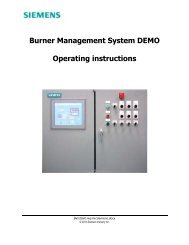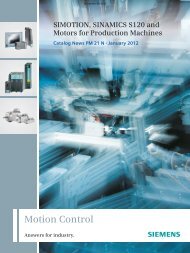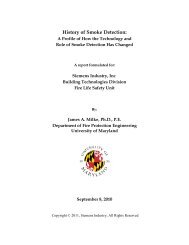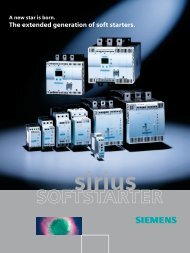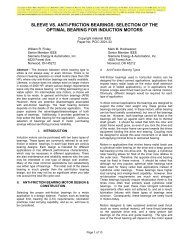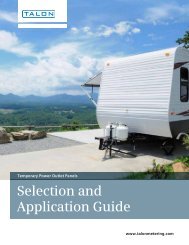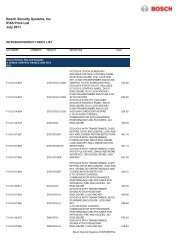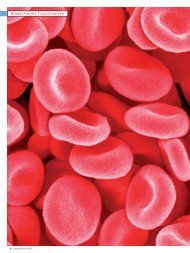SIKOSTARTTM 3RW34 - Siemens Industry, Inc.
SIKOSTARTTM 3RW34 - Siemens Industry, Inc.
SIKOSTARTTM 3RW34 - Siemens Industry, Inc.
Create successful ePaper yourself
Turn your PDF publications into a flip-book with our unique Google optimized e-Paper software.
Connection Diagrams6.1 Circuit DevicesCommon Circuit Devices. Some circuit devices common to each application shown include:• an overload relay (e. g. F1, (1OL), F2 (2OL)) for motor protection;• either a circuit breaker (1CB) or a fused disconnect switch (S1(1DS), F1(1FU)) to connect and disconnect mainpower to the application;• a Start/Stop control that is connected so when the start switch is pushed, the RUN coil in the soft starter isenergized, and the soft starter RUN interlock contact closes and latches in the RUN coil. When the stop switchis pushed or power is lost, the circuit is broken and the soft starter drops out which shuts off power to the motor.If a two wire Start/Stop control connection is used, the motor may automatically restart when power is restoredto the soft starter.EnglishBypass Contactor. The applications shown in Fig. 14 and Fig. 18 include a bypass contactor (K1). The bypasscontactor is rated to handle the running current of the motor (AC1) but not the starting current (AC3).The bypass contactor remains open until the soft starter has soft-started the motor. Once the motor is operating atline voltage, the Up-to-Voltage contact closes and the bypass contactor is energized causing motor current to flowthrough the bypass contactor rather than the soft starter.A bypass contactor is useful when the soft starter is mounted in a IP 4x, or other airtight enclosure. When the motorcurrent is routed through the bypass contactor, no current is flowing through the soft starter SCRs, and the softstarter generates no heat. For both applications, the switch SW1-1 is set to the turn off delay position so that thebypass contactor de-energizes before the soft starter (refer to Section 7.1).External activation of the bypass contactor (parallel direct-on-line starting) may lead to malfunction of the motorcontrol unit.Isolation Contactor. The applications shown in Fig. 16 and Fig. 18 include an isolation contactor. The contactordisconnector is energized when the soft starter is connected to control supply voltage and provides power to half ofthe windings of the six-lead delta motor. If a soft starter fault occurs, the fault contact opens which de-energizes theisolation contactor and the motor stops.For both applications, switch SW1-4 is set to open the fault contact on fault detection and switch SW1-2 is set sothat the isolation contactor energizes before the soft starter (refer to Section 7.1).The isolation contactor is rated to disconnect the start current (AC3).Shunt Release. A circuit breaker with shunt release is used on the second motor in Fig. 16. The switch SW1-4 is setto close the fault contact on fault detection. With the circuit breaker (Q1) closed and the soft starter operating (RUNcoil is On), the shunt release coil is de-energized. If a soft starter fault occurs, the fault contact closes to energize theshunt release coil which trips open the circuit breaker and disconnects power to the soft starter and motor.The Fig. 16 application shows two methods of using the soft starter fault contact to stop the motor when a faultoccurs:1) the fault contact opens to de-energize the isolation contactor for the first motor (M1) and2) the fault contact closes to operate the shunt release on the circuit breaker for the second motor (M2).Mains contactor. When using mains contactors (switching on and off of the supply voltage), please pay attentionthat these contactors must be switched on at least one second before creating the ON command and switched offtwo seconds at the earliest after canceling the ON command.3ZX1012-0RW34-1AN1 17



